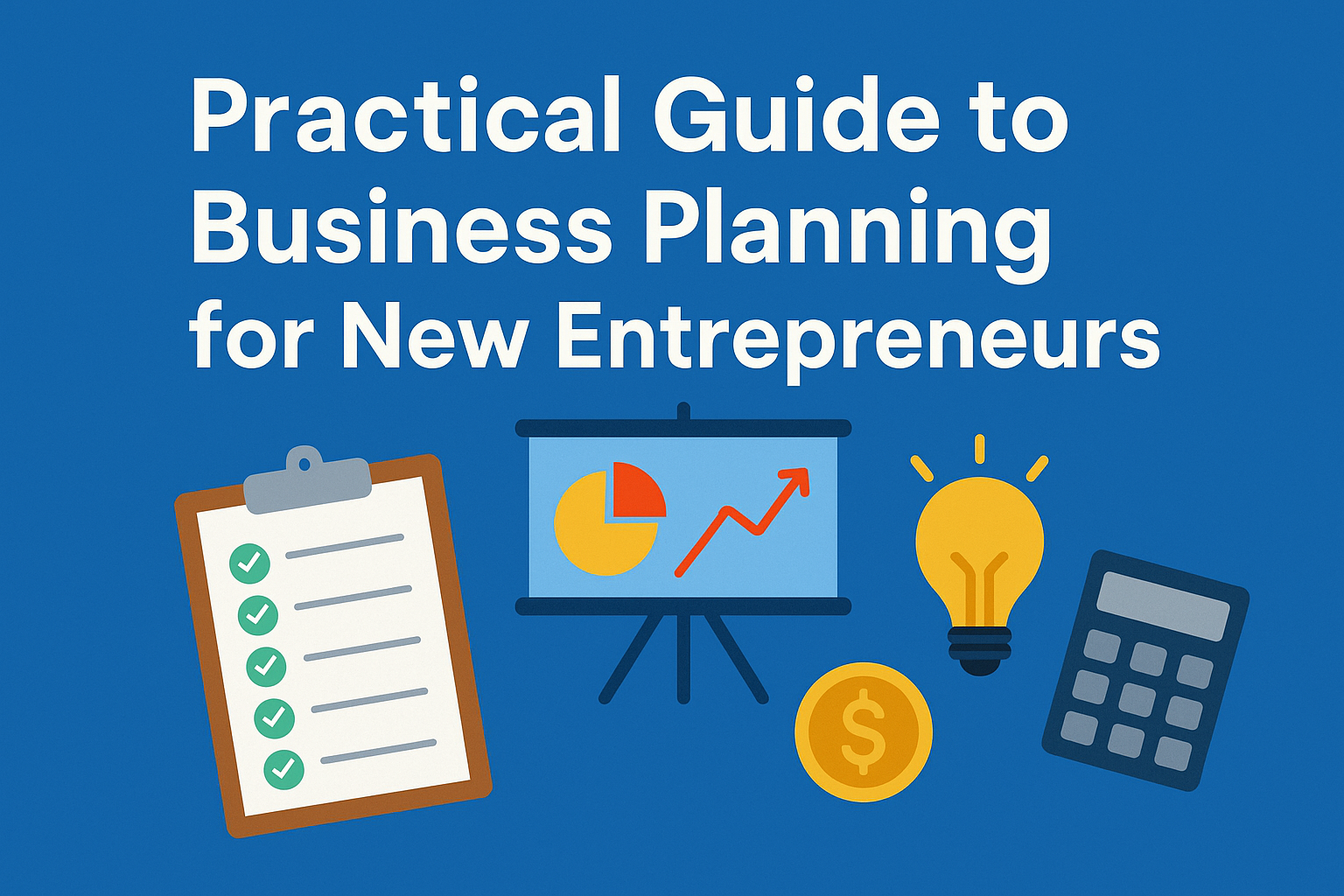Planning is the backbone of any successful small business. While many new entrepreneurs are eager to start, skipping the planning phase often leads to confusion, poor decisions, and eventually, failure. A business plan doesn’t need to be a 50-page document—it just needs to be clear, practical, and aligned with your goals.
In this guide, you’ll learn how to create a business plan that works for you and supports sustainable growth.
Why Every Small Business Needs a Plan
A business plan helps you:
- Clarify your vision
- Define goals and strategies
- Anticipate challenges
- Secure funding or partnerships
- Measure progress over time
Without planning, you’re navigating your business blindfolded.
Step 1: Define Your Business Concept
Start by answering a few key questions:
- What product or service will you offer?
- Who is your ideal customer?
- What makes your business unique?
Be specific. Instead of saying “I want to sell clothes,” say “I want to sell eco-friendly athletic wear for women aged 25–40 who value sustainability and fashion.”
This clarity will shape your entire business.
Step 2: Set SMART Goals
Your goals should be:
- Specific – Clear and precise
- Measurable – Quantifiable results
- Achievable – Realistic within your resources
- Relevant – Aligned with your mission
- Time-bound – Set within a timeframe
Example: “Gain 100 Instagram followers and 10 sales within 30 days of launch.”
Step 3: Analyze the Market
Market research gives you insights into:
- Who your competitors are
- What your target audience wants
- Industry trends and gaps
- How to price your offering
Use tools like Google Trends, Ubersuggest, or surveys to collect real data. Knowing your market helps you position yourself more effectively.
Step 4: Define Your Business Model
Your business model explains how you’ll make money. Will you:
- Sell physical products?
- Offer a service?
- Use a subscription model?
- Monetize through ads or affiliate links?
Each model has its own logistics, pricing, and delivery needs. Make sure your model aligns with your audience’s habits and preferences.
Step 5: Outline Your Marketing Strategy
Marketing is how you attract and retain customers. Even a basic strategy should cover:
- Your brand identity – logo, colors, tone of voice
- Where you’ll promote – social media, local ads, events
- How you’ll attract attention – giveaways, content, influencers
- Sales funnel – how people move from discovering to buying from you
Example: You might use Instagram to drive traffic to your website, where customers sign up for a newsletter and receive a 10% discount.
Step 6: Estimate Start-Up Costs
Many entrepreneurs underestimate how much money they’ll need. List out:
- Inventory or raw materials
- Equipment or software
- Website and hosting
- Marketing and advertising
- Business registration and licenses
- Emergency buffer fund
Even a rough estimate helps prevent future cash flow issues.
Step 7: Financial Projections
For the next 6 to 12 months, project:
- Monthly revenue
- Monthly expenses
- Profit (revenue – expenses)
- Break-even point
This gives you a realistic view of when you can expect your business to become sustainable.
If you’re seeking funding, this part of the plan becomes especially important.
Step 8: Identify Potential Challenges
Every business faces obstacles. Being prepared sets you apart. Consider:
- Supplier delays
- Rising material costs
- Market shifts
- Customer acquisition difficulties
Then write down what you’d do in response—your contingency plans.
Step 9: Set Milestones
Break your plan into milestones to stay motivated and measure progress:
- Week 1: Launch Instagram profile
- Week 3: Build landing page
- Month 1: Secure 10 sales
- Month 2: Launch referral program
Track these goals weekly or monthly to adjust your strategy as needed.
Step 10: Keep It Living
Your business plan is not a one-time task—it’s a living document. Review it every 2–3 months:
- Are your goals still relevant?
- Has your market changed?
- Are you hitting your milestones?
Update the plan to match your growth. Treat it like a GPS for your entrepreneurial journey.
Bonus Tips for Better Planning
- Use templates from platforms like Canva or Notion
- Don’t overcomplicate—simplicity increases execution
- If needed, get help from a mentor or small business advisor
- Celebrate small wins along the way
Closing Thoughts: Your Plan Is Your Power
Planning doesn’t guarantee success, but it dramatically increases your chances of staying on track, adapting quickly, and building something sustainable. As a small entrepreneur, having a clear and realistic plan gives you focus, confidence, and a professional edge.
You don’t have to be perfect. Just get your thoughts on paper and take action—step by step.
Now, I’ll generate an image to illustrate this article and continue com o próximo da lista.
